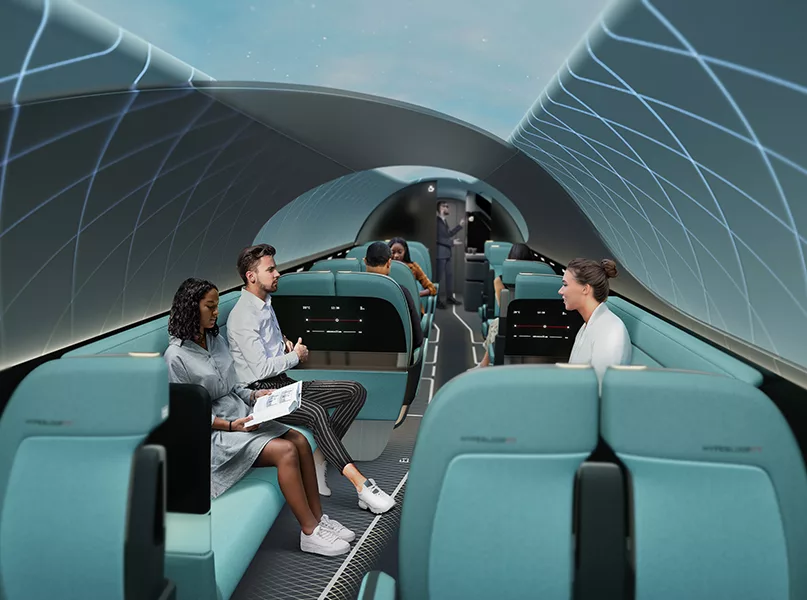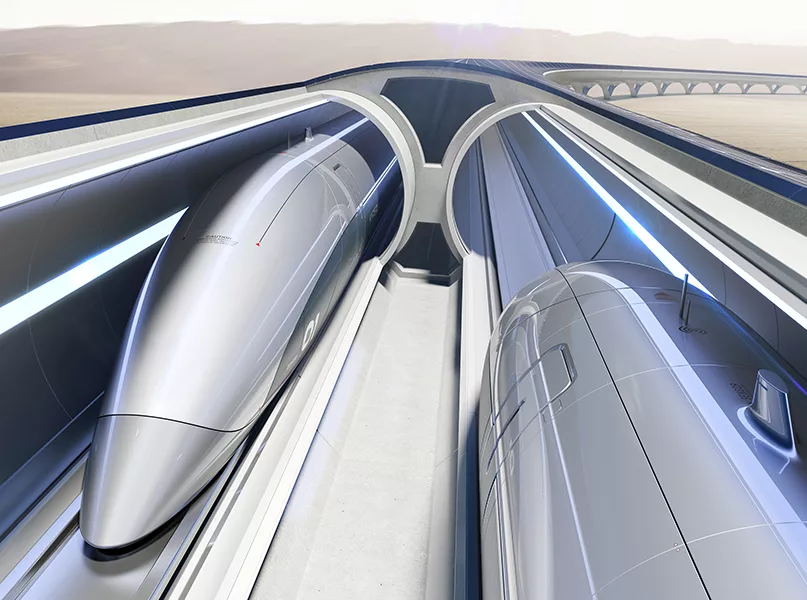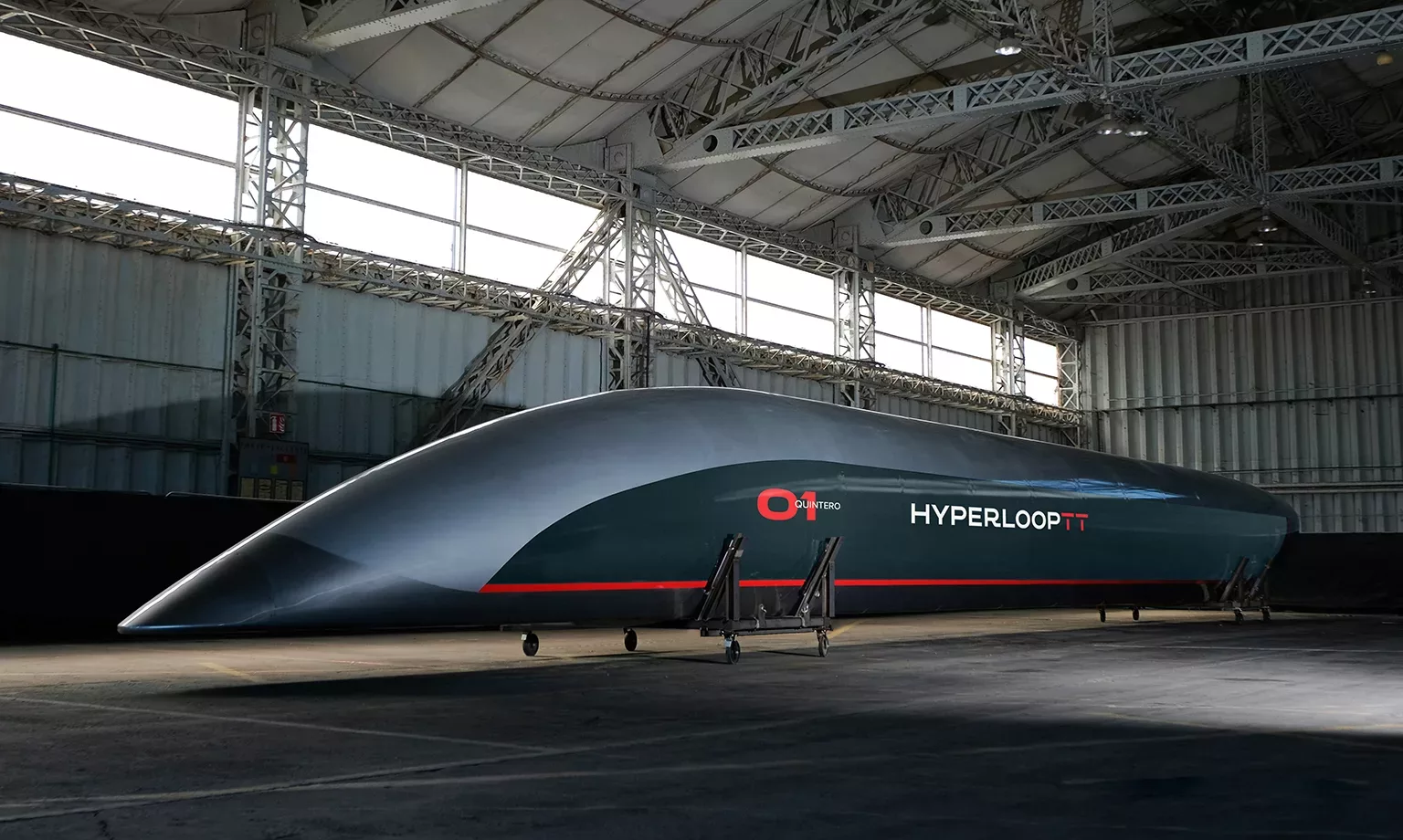Hyperloop is a new form of transportation that has the opportunity to totally redefine the passenger experience. We find out more about the system and the company focused on realizing it with Rob Miller, Chief Marketing Officer of HyperloopTT.
THE NEXT MOBILITY BREAKTHROUGH
In pursuit of the first transportation breakthrough in a century, HyperloopTT was founded in 2013 and has made tangible progress towards the widespread adoption of hyperloop systems.
Capsules are the main passenger or cargo-carrying component of the hyperloop system, designed to be aerodynamic and pressurized similar to an aircraft cabin for passenger comfort and safety.
Inside, the conditions remain controlled irrespective of the speed or external environment, and depending on the design, these capsules could carry between 20 and 50 passengers, or an equivalent amount of cargo.
The system works by propelling these pressurized capsules through a low-pressure tube, significantly reducing air resistance or drag, a considerable limitation of high-speed travel in traditional vehicles.
“One of the main innovations of the hyperloop system is the near-vacuum environment within the tube,” explains Rob Miller, Chief Marketing Officer at HyperloopTT.

“This reduction in air resistance is what allows the capsule to achieve such high speeds while using relatively little energy. The vacuum unit is responsible for maintaining this low-pressure environment.”
The hyperloop capsules are levitated using magnetic levitation (maglev) technology. In a maglev system, magnets are used to lift the capsule off the bottom of the tube, eliminating surface friction.
In the case of the hyperloop system, the capsule is propelled forward by an electric motor, which accelerates and decelerates the capsule in the tube.
The combined effect of operating in a low-pressure environment and using magnetic levitation to eliminate friction means that the hyperloop system is designed to achieve speeds of over 600 miles per hour. That’s faster than a commercial jet airliner, and much faster than any traditional ground-based transportation system.
“Its high speed, together with the ability to depart when a capsule is full rather than on a set schedule, has the potential to revolutionize both passenger and freight transport,” acclaims Miller.
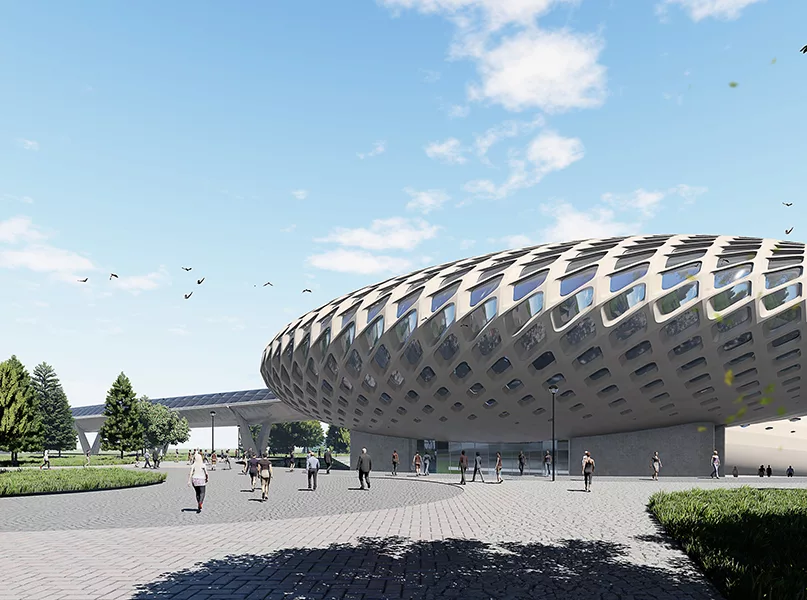
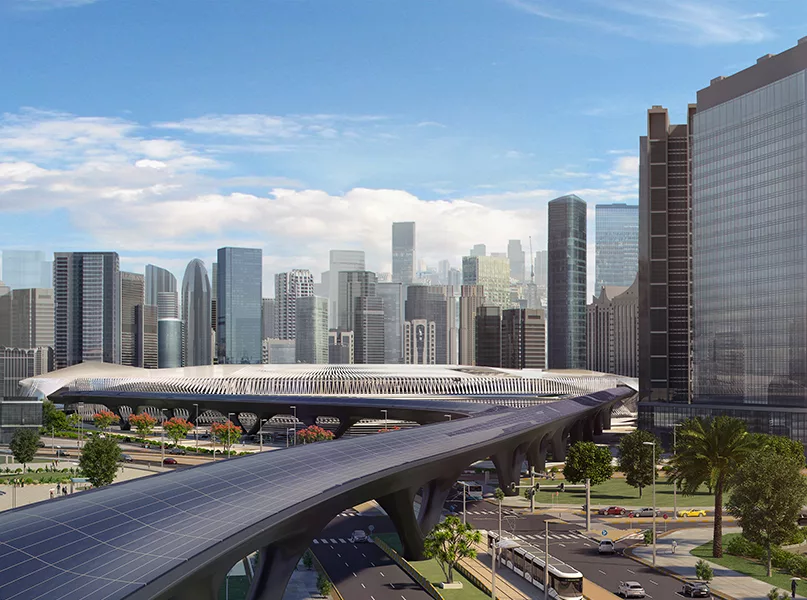
“Because the hyperloop system can transport people and goods at high speeds and with high frequency, it can potentially reduce the need for short-haul flights or truck deliveries”
Rob Miller, Chief Marketing Officer, HyperloopTT
REDUCING THE COST
The hyperloop system is often considered less expensive to implement than other high-speed transportation methods due to several factors.
First, the material costs are competitive to infrastructure like traditional rail lines or highways. They can be elevated on pylons, reducing the need for costly land acquisitions and the difficulties related to ground-based obstacles. In some cases, these pylons could be equipped with solar panels to generate renewable energy for the system, further reducing costs.
In addition, the system operates in a controlled environment, which significantly reduces wear and tear on both the infrastructure and the vehicles, and therefore leads to lower maintenance costs over time.
“The hyperloop operates with greater energy efficiency than other high-speed transport options like rail or air travel due to the reduced air resistance in the vacuum environment and the lack of physical friction because of magnetic levitation, resulting in lower operational costs,” adds Miller.
